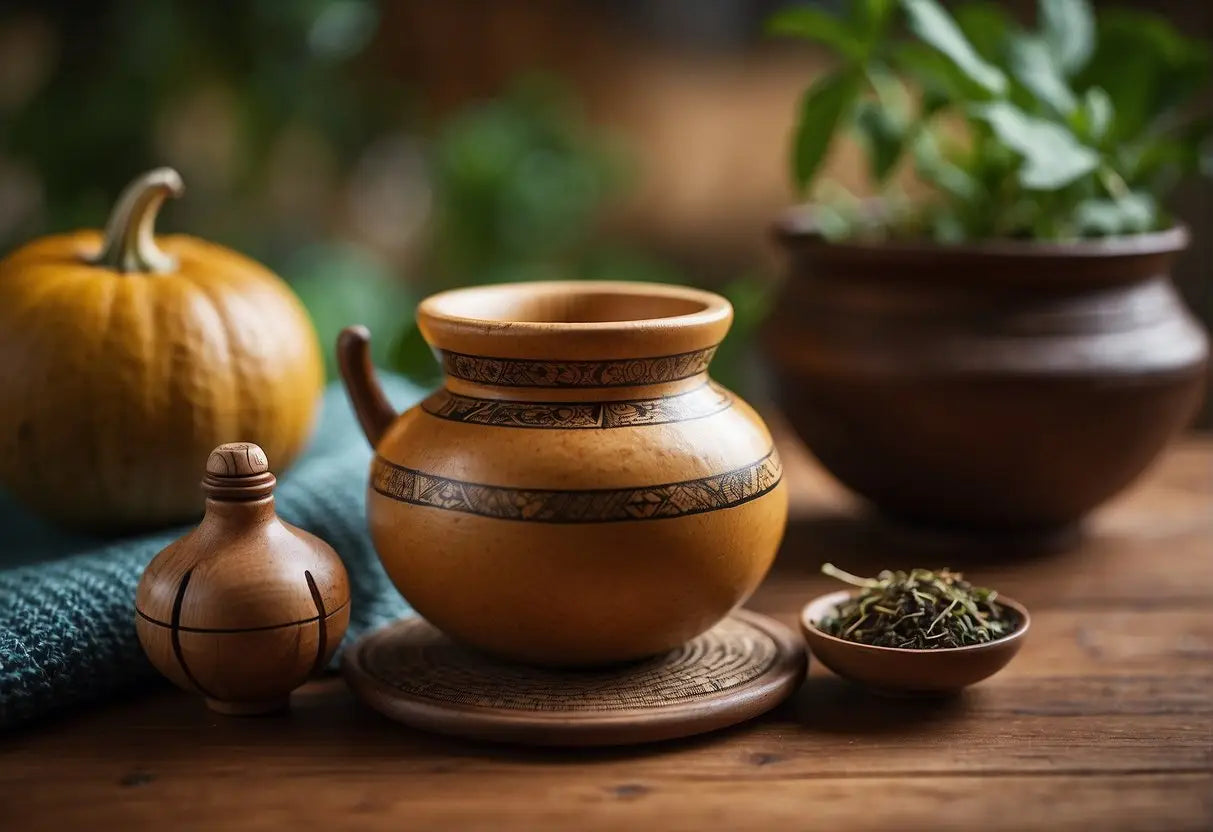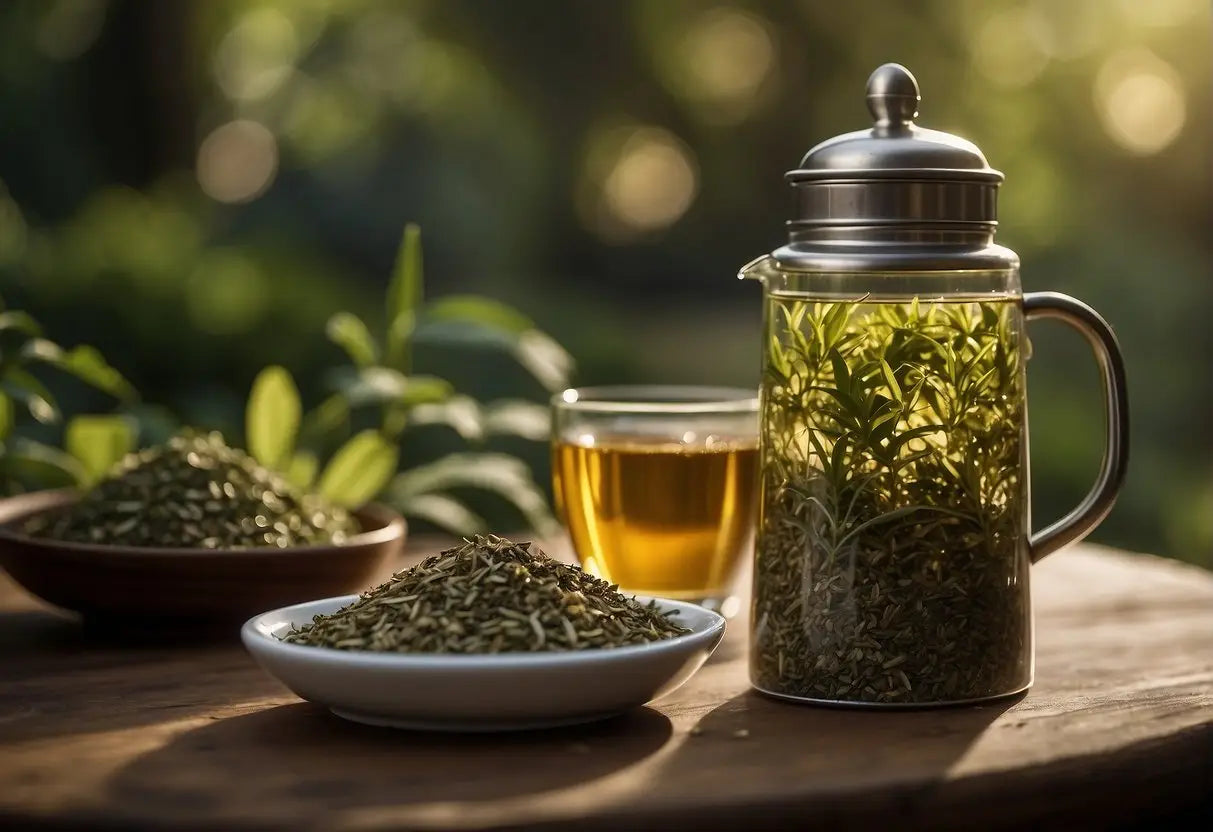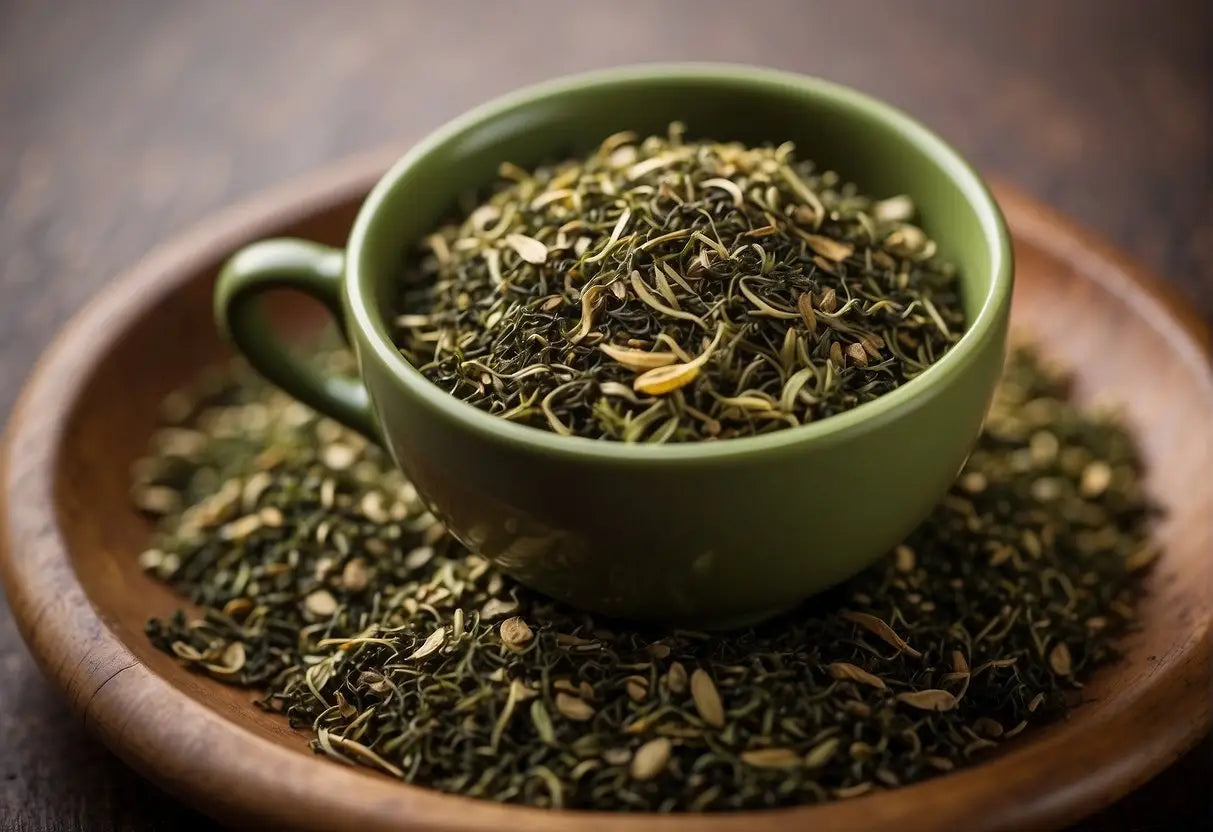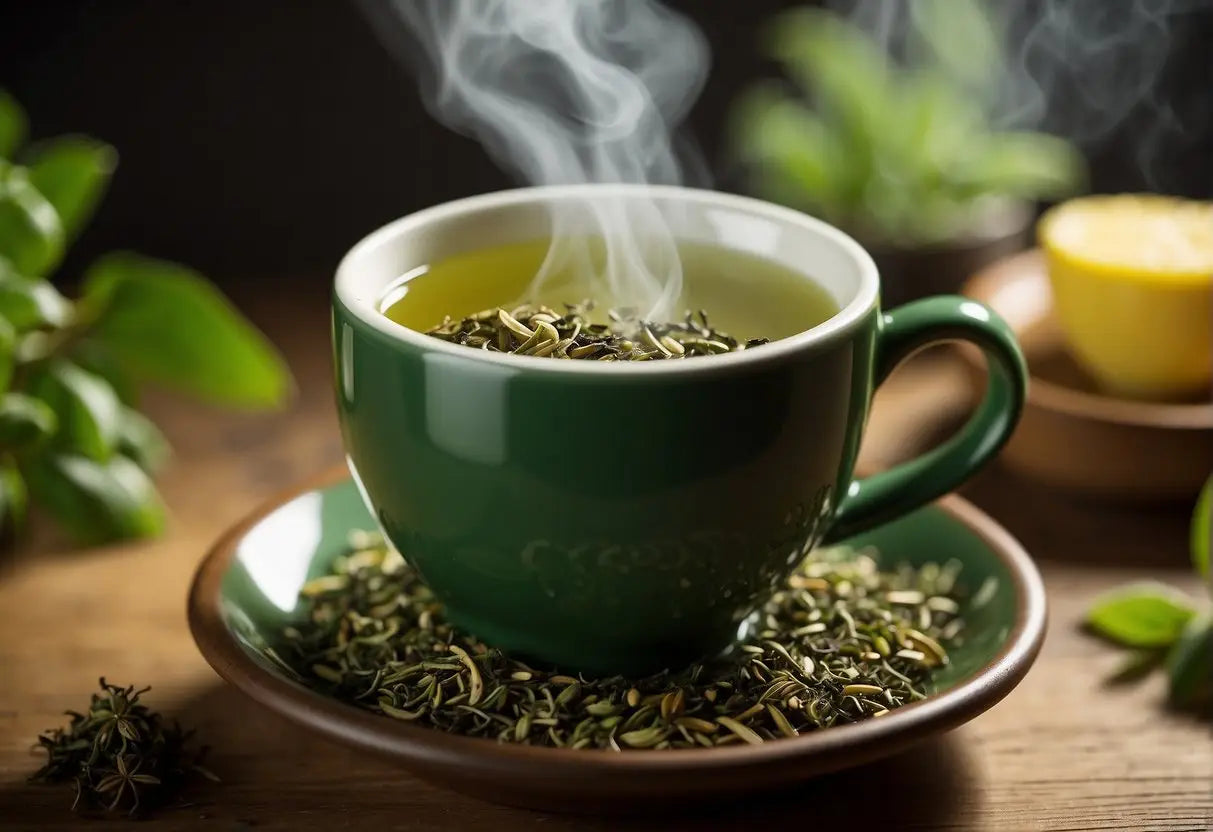What Does Mate Tea Taste Like
When you try mate tea, you'll notice its complex flavor profile. Made from the leaves of the Ilex paraguariensis plant, the taste is often described as:
- Earthy: You may recognize a robust, sometimes woody or herbal taste, akin to some green teas.
- Bitter: There's a decidedly bitter edge, much like black coffee, that is integral to its character.
- Grassy: Like green tea, you may detect fresh, grassy notes, especially in fresher batches.
- Sweet: Among the stronger flavors, a subtle sweetness can sometimes be evident, hinting at caramel.
Mate is also rich in caffeine, which, while not a taste per se, contributes to its overall experience. The flavor can vary greatly depending on factors such as:
- Preparation: The brewing time and water temperature can enhance or minimize different aspects of its taste. A longer steep often results in a stronger, more bitter flavor.
- Additions: Lemon, mint, or sugar can significantly alter its flavor profile, softening the earthy tones or complementing the natural bitterness.
The beverage is often enjoyed from a traditional vessel called a gourd, sipped through a metal straw, which can also impart subtle metallic nuances. Embrace the diverse layers of flavor in your mate tea experience, as each sip can reveal something new.
Bestsellers
Origin and Cultural Significance

Mate tea, with its distinctive flavor, is intimately linked to South American culture and has a rich historical backdrop that's deeply woven into the fabric of daily life in this region.
South American Roots
Mate tea, also known as yerba mate, hails from the South American countries of Argentina, Brazil, Paraguay, and Uruguay. The indigenous Guaraní people and Tupí communities historically consumed mate for its medicinal properties. Yerba mate (Ilex paraguariensis) is a species of the holly family, with its usage dating back to pre-Columbian times. You'll find this plant primarily in the subtropical Atlantic forests of these countries.
Traditional Consumption Methods
The traditional method of consuming mate involves the dried leaves steeped in hot water, not boiling, to preserve nutrients and compounds. Your typical mate is sipped from a gourd (called a mate or cuia) through a metal straw with a filter at the bottom, known as a bombilla. It's a communal ritual where the gourd is often shared among a group, reinforcing social bonds. Here's a breakdown of the process:
- The gourd is filled with dried yerba mate leaves.
- Hot water is poured over the leaves at a temperature of around 70°C to 80°C (160°F to 175°F).
- The mate is enjoyed by passing the gourd around in a circle, with each person drinking until the brew is finished before a refill.
Mate bars and specialized stores called "Herb-shops" or herboristerías, where you can experience this tradition, are common in these South American countries.
Main Flavor Components

Mate tea offers a unique and complex flavor profile that breaks down into several key components.
Herbal Notes
Your first sip of mate tea reveals its predominant herbal flavor. Often compared to some green teas, it possesses a fresh, grassy taste that's characteristic of its Ilex paraguariensis leaves. This natural herbaceous quality forms the foundation of mate's flavor.
Bitterness and Astringency
The bitterness and astringency in mate tea are notable but not overwhelming. Caffeoyl derivatives contribute to the bitterness, while saponins can cause the dry, astringent mouthfeel. The astringency is similar to what you might experience with a strong black tea, and it can be moderated by adjusting the brewing time and temperature.
Sweet and Earthy Undertones
Underneath the dominant flavors, you'll detect subtle sweet and earthy undertones that round out the tasting experience. These nuances might remind you of a soft, natural sweetness and the rich, loamy scent of the forest floor immediately after a rain.
Influence of Preparation Methods

The taste of mate tea can significantly vary depending on how you prepare it, from steeping time and temperature to the quality of water used, and any additional ingredients.
Lao Ban Zhang
Steeping Time and Temperature
- Steeping Time: Longer steeping allows for a more robust flavor, while short infusions tend to yield a milder taste.
- Temperature: Water temperature affects the extraction of flavors. Temperatures around 70-80°C (158-176°F) are ideal to avoid bitterness.
Impact of Water Quality
- Hard Water: Can make the tea taste dull and muddle its natural flavors.
- Filtered Water: Tends to preserve the tea's true taste profile and can enhance its natural sweetness.
Variations with Additives
- Sweeteners: Honey or sugar can add a sweet dimension, countering mate's natural bitterness.
- Herbs: Adding herbs like mint or lemon verbena introduces complementary flavors that modify the tea's profile.
Comparisons to Other Teas

When you taste mate tea, you'll find it distinct from other popular teas in several aspects, from flavor to preparation. Here's how it compares to green tea, black tea, and herbal infusions.
Green Tea
Green tea is known for its delicate, grassy, and sometimes floral flavor. By contrast, mate tea offers a robust profile, with earthy and slightly bitter notes. Whereas green tea may have a subtle astringency, mate is more pronounced in this area.
-
Flavor:
- Green Tea: Delicate, grassy
- Mate Tea: Earthy, robust
-
Astringency:
- Green Tea: Subtler
- Mate Tea: Bolder
Black Tea
Black tea typically boasts a strong, malty flavor and is often fuller-bodied than mate. Mate tea, on the other hand, has a woodsy taste and is less malty than black tea. While both can be enjoyed with or without milk, mate is traditionally consumed without additives.
-
Body:
- Black Tea: Fuller
- Mate Tea: Lighter
-
Taste Notes:
- Black Tea: Malty richness
- Mate Tea: Woodsy, herbal
Herbal Infusions
Herbal infusions vary widely, but they tend to be mild and are often caffeine-free. Mate tea, in comparison, has caffeine and can provide an energizing effect similar to coffee. Its complexity in flavor is also more akin to traditional teas than to most herbal infusions.
-
Caffeine Content:
- Herbal Infusions: Usually caffeine-free
- Mate Tea: Contains caffeine
-
Flavor Complexity:
- Herbal Infusions: Mild and varied
- Mate Tea: Complex and layered
Health Benefits and Considerations

When you drink mate tea, you're not just indulging in a cultural experience. You also glean benefits from its antioxidants and face considerations regarding caffeine and potential health risks.
Antioxidant Content
Mate tea is renowned for its high antioxidant content, which includes compounds like polyphenols and xanthines. These antioxidants play a role in neutralizing harmful free radicals in your body, which can contribute to reduced inflammation and promoting overall health.
- Polyphenols: May reduce the risk of chronic diseases
- Xanthines: Stimulate the nervous system and increase alertness
Caffeine Levels
With mate tea, you're consuming caffeine levels comparable to that of green or black tea, typically between 20-40 mg per serving. However, caffeine sensitivity varies, so monitor your intake accordingly.
- Moderation Recommended: Too much caffeine may lead to jitteriness or sleep disturbances.
- Individual Sensitivity: Adjust consumption based on personal caffeine tolerance.
Potential Health Risks
Despite its benefits, you must consider potential risks associated with mate tea. Drinking mate at very high temperatures or consuming it in large quantities may be of concern.
- High-Temperature Consumption: There are studies linking very hot mate tea to an increased risk of certain cancers, such as esophageal cancer.
- Excessive Intake: Overconsumption can lead to caffeine-related side effects and may impact those with certain health conditions.
It's key to enjoy mate tea in moderation and at a moderate temperature to maximize its benefits while minimizing risks.
Brewing Tips for Optimal Taste

When brewing mate tea, the quality of the water is crucial. Use fresh, cold water and avoid water that has been previously boiled, as it could diminish the tea’s flavor. The ideal temperature for the water should be between 160-180°F (70-82°C). If the water is too hot, it will burn the leaves and create a bitter taste.
Mate requires a specific preparation process:
- Preliminary Rinsing: Rinse the mate gourd with warm water to prepare it, maintaining the integrity of the gourd and the flavor of the tea.
- Leaf Placement: Fill the gourd two-thirds full with mate leaves to ensure a rich and full-bodied brew.
- Cold Water: Before adding hot water, pour a little cold water into the gourd. Allow it to absorb into the leaves to protect their flavor.
- Inserting the Bombilla: Place the bombilla (metal straw) in the gourd at an angle before adding hot water. This step prevents the bombilla from becoming clogged.
- Pouring Technique: Slowly pour hot water into the gourd beside the bombilla to avoid disturbing the arrangement of the mate leaves.
Steeping Time:
- Initial Steeping: Steep for a minute before the first drink, allowing the tea to awaken.
- Subsequent Steeps: Refill with hot water as desired. Each steeping will have a milder flavor.
To maintain the flavor profile of mate:
- Do not use boiling water.
- Do not stir the leaves after the initial setup.
- Gently sip through the bombilla, allowing the water to filter through the leaves.
Maintaining these practices will ensure a delightful mate experience, blending tradition with the rich, robust flavor that mate is known for.
Frequently Asked Questions

In this section, you'll find concise answers to some of the most common inquiries regarding the taste profile and characteristics of yerba mate. These points will help you understand what to expect when tasting mate for the first time and provide clarity on its caffeine content and potential health implications.
What are the flavor profiles commonly associated with yerba mate?
Yerba mate exhibits a complex flavor that can include earthy, herbal, and grassy notes. Some people also detect a subtle smokiness, depending on the mate's preparation and whether or not it has been aged or smoke-dried.
How does the taste of yerba mate compare to that of green tea?
While both yerba mate and green tea share a plant-based, vegetative taste, yerba mate tends to have a more robust and sometimes more bitter flavor compared to the often lighter and sweeter notes of green tea.
Can the taste of yerba mate be likened to tobacco flavors?
Yerba mate does not directly taste like tobacco, but it may have a slightly smoky element that could remind some of the earthiness found in tobacco products. The comparison largely depends on individual taste perception.
What are the potential health benefits and risks of drinking yerba mate?
Yerba mate is believed to be rich in antioxidants and can be a stimulant due to its caffeine content. However, it is also associated with certain risks when consumed in large amounts, such as increased heart rate or potential links to certain types of cancer from very hot temperatures and specific compounds found in the plant.
Is the taste of mate tea considered an acquired preference?
Many people find that the robust and complex taste of yerba mate becomes more enjoyable over time. As with many distinctive flavors, it may not appeal to everyone initially, but preference often develops with repeated enjoyment and familiarity.
Does mate tea contain more caffeine than coffee?
While mate tea does contain caffeine, it generally has less caffeine per serving than coffee. However, the caffeine level in mate can vary depending on how it's prepared and can be similar to that of green or black tea.
← Older post Newer post →











